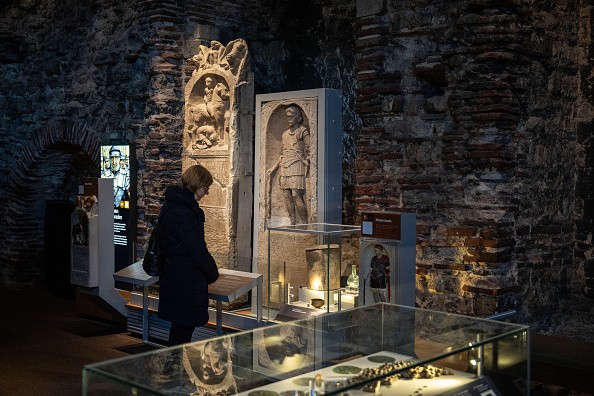Researchers discovered new signs of gladiatorial battles that did happen under the occupation of the Roman Empire through an excavated artifact. The Colchester Vase is one of the rare artifacts to have survived since 175 AD.

Signs of Gladiatorial Battles
Gladiators were known in history as one of the few people who fought in front of large crowds in the Colosseum as a form of entertainment in ancient Rome, with some of it leading to tragic deaths. But new research revealed that gladiators also fought on British territory.
Interesting Engineering reported that researchers found evidence that gladiatorial battles did indeed happen during the Roman Empire, seen through a Colchester Vase that is made of clay around 175 AD. The artifact was excavated in 1853 in Colchester town, Essex county, and depicts two gladiators fighting a bear and a dog while chasing a hare and deer.
The two gladiators were named Memnon and Valentinus, which according to the report are stage names. These inscriptions were carved into the clay before firing, which is the normal process during the Roman Empire that turns raw clay into clayware. Aside from this artifact, Memnon also appears quite often in Roman literature.
Also Read : [LOOK] Warsaw Mummy Project Reveals Portrait of Egyptian 'Mysterious Lady' Through Facial Reconstruction
Aside from this artifact, The Times of Israel reported that Memnon also appears quite often in Roman literature. London's King's College Senior Lecturer John Pearce stated that he was described as an impressive "black-skinned" person that came from Troy.
Researching the Excavated Artifact
Researching the excavated artifact led to starting a new conclusion as it showed the true significance of documenting a battle in Colchester. CIMS Director Frank Hargrave stated that this is currently the only evidence of a Roman arena gladiatorial battle that was staged in Britain and there were no written descriptions about it.
These findings were described as crucial since the name inscriptions were previously believed that have been engraved after firing. This research pointed out that the names were not an original part of the vessel's design and gladiators lived in Roman Britain at the time the vase was created.
Roman Archeologist and Senior Curator with Colchester and Ipswich Museums (CIMS) Glynn Davis stated there is nothing else like that from Britain. The Guardian reported that the museum currently owns the vase. He explained that the piece is a commemorative piece and was used as a funerary vessel.
This might be a commission by a gladiator trainer, owner, or someone else involved with such contests as memorabilia of the ultimate sports. "They could well have sponsored the games. Or they were an absolute sports nut. For whatever reason, they saw the fight and thought, 'I want a memento of that,'" Davis stated.

ⓒ 2025 TECHTIMES.com All rights reserved. Do not reproduce without permission.



